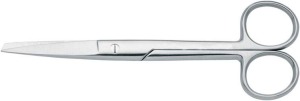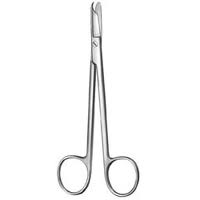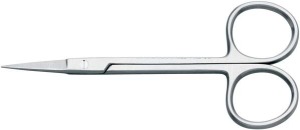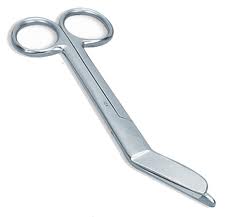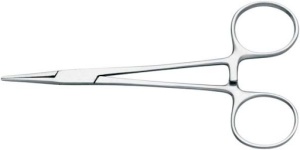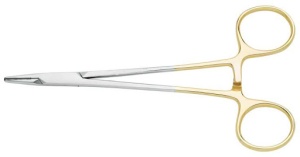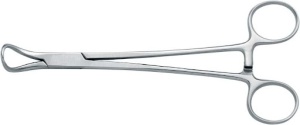By Mark Durivage, Quality Systems Compliance LLC
Regulation (EU) 2017/745 Medical Device (EU MDR) of the European Parliament and of the Council of 5 April 2017 on medical devices, amending Directive 2001/83/EC, Regulation (EC) No 178/2002, and Regulation (EC) No 1223/2009 and repealing Council Directives 90/385/EEC Active Implantable Medical Devices Directive (EU AIMDD) and 93/42/EEC Medical Device Directive (EU MDD) was set for enforcement in May 2020. However, due to the global COVID-19 pandemic, the European Commission extended the date of application for EU MDR by 12 months, meaning medical device companies now have until May 26, 2021 to comply with MDR requirements.
Chapter 1, Scope and Definitions, Article 2, Definitions, of the MDR provides the following:
Manufacturer – means a natural or legal person who manufactures or fully refurbishes a device or has a device designed, manufactured, or fully refurbished, and markets that device under its name or trademark.
Economic operator – means a manufacturer, an authorized representative, an importer, a distributor, or the person referred to in Article 22, Systems and Procedure Packs, requirements (1) and (3).
Other than under the definition of “economic operator” in Article 22, Systems and Procedure Packs, requirements for sterilizers, the MDR does not directly address the definition and requirements of the role of the traditional contract manufacturer.
Regulation (EU) 2017/746 In Vitro Diagnostic Medical Devices (IVDR) of the European Parliament and of the Council of 5 April 2017 on in vitro diagnostic medical devices and repealing Directive 98/79/EC and Commission Decision 2010/227/EU In Vitro Diagnostic Medical Devices Directive (IVDD) is set for enforcement on May 26, 2022.
Chapter 1 Scope and Definitions, Article 2 Definitions of the IVDR provides the following:
Manufacturer – means a natural or legal person who manufactures or fully refurbishes a device or has a device designed, manufactured, or fully refurbished, and markets that device under its name or trademark.
Economic operator – means a manufacturer, an authorized representative, an importer, or a distributor.
The MDR and IVDR do not directly define or address the role of the traditional contract manufacturer, which is traditionally defined as those that manufacture products for or on behalf of the specification holder.
Before placing a medical device or in vitro diagnostic medical device on the market, manufacturers are required to obtain a single registration number (SRN) and register and input the required information into the required electronic system. There is no requirement for contract manufacturers to obtain an SRN and register, except for those that combine medical devices or in vitro diagnostic medical devices into systems or procedure packs or that sterilize systems or procedure packs.
The most significant requirement for manufacturers (specification holders) is to ensure there are robust quality agreements executed with the contract manufacturers. Some of the items to consider including in the quality agreement are:
- Quality management system
- Unannounced audits
- Availability of records
- Risk management
- Validations
- Change control
- Traceability
- Post-market surveillance support
Although not explicitly required, a functioning quality management system (QMS) should be a primary consideration. Without a QMS (ISO 9001 or 13485), fulfilling the remaining requirements will be difficult, if not impossible, and may hinder the product approval process for manufacturers (specification holders). An effective certified QMS from a reputable registrar should provide the necessary structure required for compliance.
The contract manufacturer should be aware of the possibility of unannounced audits of suppliers and/or subcontractors by notified bodies. Some contract manufacturers, especially smaller organizations, may not be prepared to handle such an audit. In this case, the manufacturer (specification holder) should help the contract manufacturer develop a process and procedures for unannounced audits by notified bodies. A good time for practice could be during a supplier audit.
The quality agreement should ensure that documents and records related to the production of a medical device or in vitro diagnostic medical device should be readily available and must be shared with the manufacturer (specification holder) and/or notified body upon request. This will include device master records (DMRs), device history records (DHRs), policies, standard operating procedures, work instructions, validations, risk management documentation, training records, etc. The documents and records must be readily available for review and stored in a way that minimizes deterioration and prevents loss.
Risk management documentation, usually a process failure modes effects analysis (pFMEA), should be developed and maintained based on the requirements of ISO 14971, Medical devices – Application of Risk Management. It is especially important that post-market surveillance data (internal nonconformances and external complaints) are used to update the assumptions for the probability of occurrence and probability of detection, as well as to identify new failure modes to demonstrate an active and effective risk management process.
Manufacturers (specification holders) need to ensure contract manufacturers establish and maintain robust risk-based qualification and validation programs, as these documents will be subject to review by notified bodies. Adequate sample size linked to risk is essential to ensure validations demonstrate confidence that the process will produce consistent results that meet predetermined specifications.
Change control processes used by contract manufacturers must ensure there is, at a minimum, a communication and feedback mechanism that allows the manufacturer (specification holder) an opportunity to assess all changes for potential regulatory impact on the status of the marketing authorization. Preferably, the manufacturer should sign on to any changes affecting its regulated products.
Traceability is essential for all raw materials and components used in the manufacture of regulated medical devices. Manufacturing materials such as mould releases, cutting oils and fluids, and tumbling media should be recorded and subject to change control, as a regulatory assessment will be required by the manufacturer (specification holder). A robust traceability program will aid in the prevention of fraudulent and/or counterfeit raw materials and components entering the systems as well as aid in complaint investigations, field corrections, and recalls.
As part of post-market surveillance support, contract manufacturers will need to ensure that production records as well as nonconformance records are readily accessible and constructed to facilitate review. The internal failure modes of the contract manufacturer must align with the external failure modes of the manufacturer (specification holder) to allow for an efficient review of data regarding complaints and escalation to CAPA as well as the validation of FMEA probability of occurrence and detection assumptions.
Conclusion
The relationship between the contract manufacturer and the manufacturer (specification holder) under the EU MDR and IVDR will be much more participatory and engaging than with previous regulations. The EU MDR and IVDR will necessitate a partnership built on a foundation of trust, cooperation, and increased communications.
I cannot emphasize enough the importance of establishing a comprehensive quality agreement outlining the roles and responsibilities of each party as well as the increased expectations and support for unannounced audits, the availability of records, an active risk management and validation program, a robust inclusive system for change control, increased traceability requirements, and post-market surveillance support. The suggestions presented in this article can and should be utilized based on industry practice, guidance documents, and regulatory requirements.
About the Author:
Mark Allen Durivage has worked as a practitioner, educator, consultant, and author. He is Managing Principal Consultant at Quality Systems Compliance LLC, an ASQ Fellow and SRE Fellow. Durivage primarily works with companies in the FDA-regulated industries (medical devices, human tissue, animal tissue, and pharmaceuticals) focusing on quality management system implementation, integration, updates, and training. Additionally, he assists companies by providing internal and external audit support as well as FDA 483 and warning letter response and remediation services. He earned a BAS in computer-aided machining from Siena Heights University and an MS in quality management from Eastern Michigan University. He holds several certifications, including CRE, CQE, CQA, CSSBB, RAC (Global), and CTBS. He has written several books available through ASQ Quality Press, published articles in Quality Progress, and is a frequent contributor to Life Science Connect. You can reach him at mark.durivage@qscompliance.com with any questions or comments.

